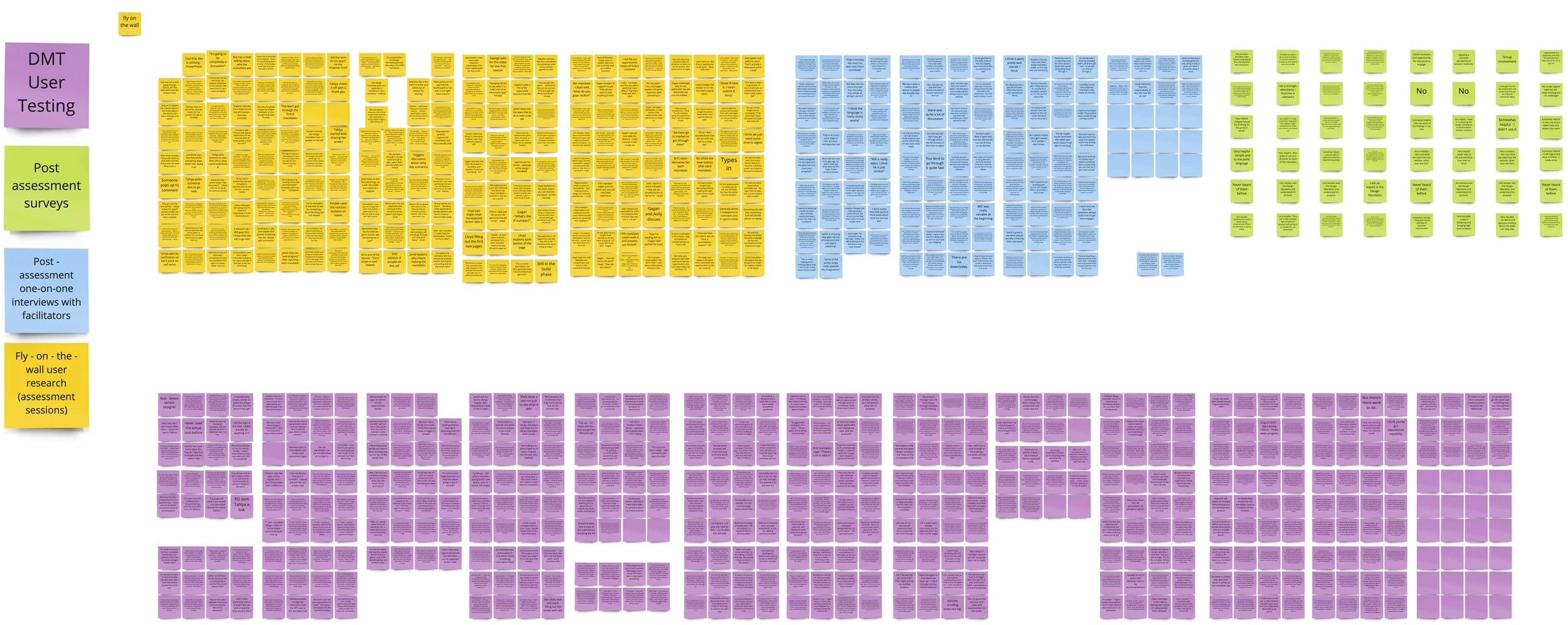Design Mandates - Telstra
I was given the opportunity to lead a small project in my Service Design Rotation regarding our Design Mandates at Telstra. This project was accomplished within two months under the guidance of Sam Ezra (Customer Experience COE Lead), and Jake Dutton (Senior Service Designer).
The Design Mandates is a set of 16 principles, which guides us in putting the customer at the centre of everything we do.
The Design Mandates
It is expected for any customer facing product, service or experience, to complete a Design Mandates Assessment and ensure a minimum viable experience that delivers on our Customer Principles. The Design Mandates Tool is an interface utilised to facilitate an assessment session, to assess whether projects have met the Design Mandates.
Problem Statement:
“How might we improve the user journey of engaging with the Design Mandates?”
Vision: The Ideal User Scenario
When a team is ready to run a Design Mandates Assessment, the facilitator books in a 1.5 hr session with all necessary stakeholders.
The team understands the purpose of the Design Mandates and is running the assessment because they see the benefits.
The team understands that the assessment is not a test and that all star ratings should be celebrated. Sessions are ran collaboratively.
Team members are encouraged to honestly answer what their project has achieved/yet to achieve - For dot points where team members have yet to achieve, next steps are captured to steer the team into the right direction
If 1.5 hrs is not enough, an extra session is encouraged. Once the assessment is done and the rating/report has been generated, teams are encouraged to discuss next immediate steps.
It is encouraged to run two to three assessment sessions for each project before launch, and one after launch - so teams are encouraged to book in their next session when they are ready.
User Journey
Before any interviews / user-testings were conducted, I mapped out the user journey. The stakeholders and I reached an agreement for the scope of the project to remain within this section of the user journey:
Objective
Determine how we can improve the user journey of engaging with the Design Mandates
Key Focuses
Observe how facilitators are running their assessment sessions
Examine how users interact with the webpage and Design Mandates Tool
Determine how effective assessment sessions are in helping teams with their projects and missions.
Provide insights and guidance as to how to best achieve the ideal scenarios for the Design Mandates Tool.
Method
FOUR Fly-on-the-wall user research on assessment sessions
THREE post assessment one-on-one interviews with facilitators
EIGHT surveys from team members who participated in assessment sessions
FIVE user – testing on the webpage and Design Mandates tool
Note Taking - Clustering - Final Insights
After interviews/ user-testings / surveys were conducted, all notes, observations and verbatums were transferred onto sticky-notes on Miro:
I then utilised affinity clustering to cluster notes into themes. Notes were clustered a few times before final insights were written.
Main Takeaways
CULTURE
We are starting to see good culture being established in a selection of teams, but it has not reached the majority yet.
PERCEPTION
Despite understanding the benefits and knowing the purpose of the Design Mandates, there is still a sense of anxiety around the impacts of a bad rating on the team.
FACILITATION
Facilitation of assessment sessions vary greatly between teams, due to the lack of information and facilitation materials provided.
INFORMATION – RELEVANT EXAMPLES
There is frustration coming from participants who are struggling to apply the Design Mandates to their own mission and project.
INFORMATION ON THE WEBPAGE
There is insufficient information on the webpage regarding Design Mandates.
INTERFACE DESIGN AND FLOW
The amount of information and the structure of the tool and the webpage makes it harder for users to find and digest information, and to utilise the tool.
Deliverables
All findings and observations were consolidated into an official report, with recommendations on potential ways in improve the user journey of engaging with the Design Mandates. This report was presented to stakeholders and internal staff who participated in the research. The report also captures the design process and detailed verbatums from participants.
Recommendations were placed on an impact-effort matrix to help stakeholders decide on next steps
Results and Impact
The report was used as a guidance to roll out the next version of the Design Mandates, and the Design Mandates Tool (improvements were made to the interface design and user flow), resulting in better user experience.
Several new materials were created to support the Design Mandates, including an updated and more extensive FAQ section, and a detailed and engaging e-learning training program
Greater awareness and engagement was brought to the company about the Design Mandates and it’s appropriate usage














